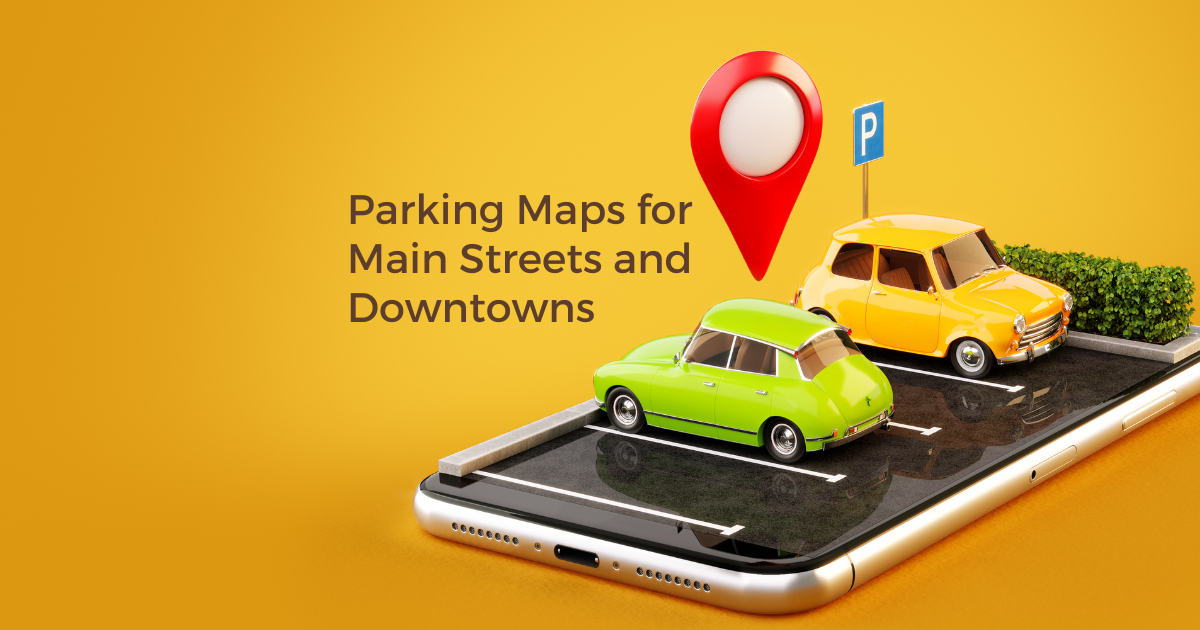.png)
Maps have long been essential tools for navigation, spatial analysis, and communication of geographic information. With the advent of digital mapping technologies, maps have become interactive, transforming the way businesses and individuals leverage maps to visualize data and engage audiences.
This article will provide an overview of the best interactive map tools available in 2024. We will go over each of their key features and pricing plans, as well as discuss the most important factors to consider when choosing interactive map software.
Understanding Interactive Maps
An interactive map is a digital map that allows users to manipulate the way the geographic data is displayed. Users can zoom in and out to control an interactive map’s level of detail, select specific points on the map to access additional information, display different layers of data, and more.
Interactive maps offer several advantages over traditional, static maps:
- They allow users to customize the map to their exact needs by selecting the most relevant layers, information, and features.
- They provide highly detailed information that does not always fit on static maps with single layers.
- They can be updated in real-time, ensuring the data displayed is always current.
Interactive maps depend on digital mapping technologies such as Geographic Information Systems (GIS), satellite imagery, and Global Positioning System (GPS) data. Web technologies such as HTML, JavaScript, and CSS provide the functionalities that make it possible for users to interact with digital maps.
Top Interactive Map Software Tools
There is no shortage of tools for creating custom interactive maps available online. Here are some of the best choices:
1. Mapbox
Mapbox is a cloud-based mapping platform that lets you create custom maps with satellite imagery, street views, and more. With Mapbox, vector tiles keep loading times fast, even for large datasets, ensuring a smooth user experience. The platform offers a wide range of customizable map styles, allowing you to create a unique look for your maps. Access rich data layers, including satellite imagery and terrain information, to enhance your maps. Mapbox also supports real-time updates, enabling you to display dynamic heatmaps, traffic flow visualizations, and more. Mapbox has a free version with a scalable pricing structure based on monthly views.

2. Proxi
Proxi is a user-friendly interactive map-building tool for personal or business use. Proxi users can curate local guides, share recommendations, and visualize data with no prior experience or coding required. Key features include date and time association events, marketing features to ensure maps align with branding, crowdsourcing features and engagement insights, and more. Proxi is $24 per month for unlimited maps and core features. Feature add-ons are available al-la-carte.

3. PamPam
PamPam is a fun and free map-making tool that lets you create colorful, shareable maps. The platform's AI-powered suggestions help you identify locations even without an address, while its playful aesthetic makes map-making enjoyable. You can add annotations with drawings, text, or stickers to personalize your maps. Importing lists of places is a breeze, whether from your clipboard, Google My Maps, Airtable, or any link with place data. PamPam starts at $5 per month for basic map building and sharing and $29 per month for full access.

4. Felt
Felt is a modern, collaborative map-making tool that offers advanced features for creating, annotating, modifying, and visualizing data. Unlike simpler tools, Felt supports the import of various map data formats, including KML, CSV, Excel, Zip, and GeoJSON files. This browser-based platform allows you to share your maps privately or publicly for free. Felt's pricing includes free unlimited map creation and sharing, with a $30/month option for advanced features such as image and PDF exports and embedded maps.

5. Mapme
Mapme is a mapping tool that enables users to create custom maps and embed them on their websites or share them on social media. It offers a versatile range of features, including the ability to customize style and layout, create custom map markers, and add multimedia content. Mapme also provides users with analytics and reporting tools for tracking engagement with their maps. Users can sign up for a seven-day free trial, after which pricing plans start at $24 per month.

6. Maptive
Maptive is a cloud and web-based mapping software that provides users with access to a vast library of geographic data, including street maps, satellite imagery, and demographic data. Maptive also offers numerous tools and customization options, including multi-variable map marker grouping, heat mapping, filtering, distance calculation, and much more. The software comes with a ten-day free trial, and pricing plans start at $250 for a 45-day pass or $1,250 for a year of Pro access.

7. Zeemaps
Zeemaps is a web-based mapping tool that allows users to create custom maps and share them with others with no sign-up required. It offers features like the ability to add and group custom markers, insert custom data fields, draw and color regions, overlay traffic information, and more. The site also provides users with analytics features, allowing them to easily manage multiple maps and track engagement. Zeemaps offers a basic plan for free, as well as professional plans starting at $19.95 per month.

8. Google Maps
Google Maps is a web-based mapping service that provides users with access to street maps, satellite imagery, and geographic data. It offers numerous interactive features, including the ability to add custom markers and annotations. Google Maps is free to use, making it an excellent option for individuals and small businesses with limited budgets.

9. Scribble Maps
Scribble Maps is a custom mapping tool that’s designed to streamline annotation and analysis. It also comes with a team dashboard that makes simultaneous collaboration simple. Users can add custom markers, text, shapes, and more, as well as apply a robust array of data analysis capabilities to get the most valuable insights out of their maps. Scribble Maps comes as a limited free version or a full-featured pro version starting at $14 per month.

10. Esri - ArcGIS Online
ArcGIS is widely popular in sectors like education and government, offering a comprehensive suite of features for creating, sharing, and analyzing maps. With Esri, you can access data from multiple sources, leverage powerful analysis tools, and easily share maps with others. The platform's strength lies in its flexibility, allowing extensive customization to meet user needs. A wide range of add-on products and extensive online support and documentation further enhance its capabilities. ArcGIS starts at $58 per month.

Factors to Consider When Choosing Interactive Map Software
- Ease of use: The interactive mapping software you select should be user-friendly and easy to navigate.
- Customization features: Look for a tool that provides the right customization options for tailoring maps to your specific needs.
- Integration: Choose mapping software that integrates seamlessly with the software you are already using.
- Geographic coverage: Consider whether the software’s available range of geographic data is sufficient to meet your needs.
- Security and privacy: The best map-building tools come equipped with ample security and privacy features to protect your data.
- Customer support: Try to find a custom mapping tool that offers excellent customer support so you can quickly and easily address any issues that arise.
Conclusion
Interactive map software has completely revolutionized the way we analyze and learn from geographic information. The tools listed above are some of the best interactive mapping tools in 2024 for individuals and businesses alike. When choosing interactive map software, consider essential variables such as user-friendliness, customization options, integration capabilities, geographic coverage, privacy features, and customer support.
Ultimately, the right mapping software for you depends on your specific use case and your available budget. It’s almost always best to take advantage of free trials and try out several options before making a final decision.
Related Articles
Get Inspired
View All Featured MapsAdventure Awaits!
Check out some of the latest articles on our blog





.png)
